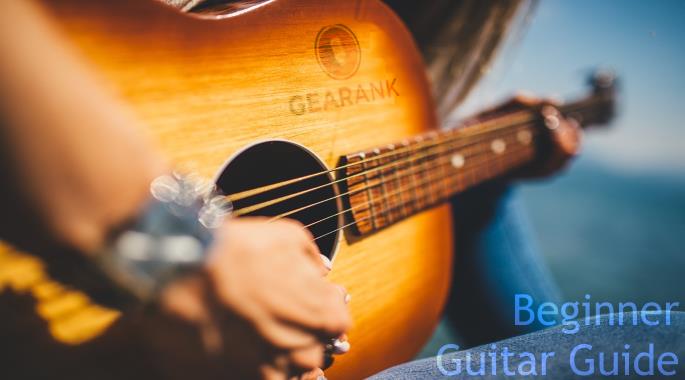
- Best Acoustic Guitars For Beginners
- Things to Consider When Buying a Beginner Acoustic Guitar
- Perfect Fit
- Things That Make a Guitar Easy (Or Hard) To Play
- Body Type
- What is the Best Guitar for Short Fingers?
- Buying Advice on Acoustic-Electric Guitars
- What To Expect During Your First Few Weeks of Playing the Guitar
- Which is better for beginners, Acoustic or Electric Guitar?
- Tips on Practicing
- Advanced Topics
- Methodology – How We Chose Which Guitars To Recommend
- Further Advice
- About the Author & Contributors
- Comments
Disclosure
We recommend all products independently of 3rd parties including advertisers. We earn advertising fees from:
• • • • •

• • • • •
Amazon
As an Amazon Associate we earn from qualifying purchases.
• • • • •
More Beginner Guides
In the age of Youtube and Tiktok, students are bombarded with generic guitar recommendations. But the best beginner acoustic guitar for each student will be different, it should be based on factors like age, comfort, finger length, experience, and more. This is why the recommendations of guitar teachers like myself are valuable.
As such, I always make it a point to guide my students or their parents when buying guitars. I’ve even taken the time to test guitars and shop around with my students. And to this day, many of my former students and even my friends still ask me for guitar-buying advice.
In this guide, I’m extending my recommendations to you, our readers, following the same principles I use when recommending guitars to students. Drawing from my years of playing and teaching experience to help you buy an excellent first acoustic guitar. One that is practical, enjoyable, and inspiring to play. I also want to help you avoid difficulties with tuning, string action, dull sound, and other quality problems.
Below are my recommendations – featuring top-rated acoustic, acoustic-electric, and classical guitars – all of which I consider the best for beginners.
Each guitar I recommend is readily available from major music gear retailers in the US. This way, your first acoustic guitar is one click away.
Best Beginner Acoustic Guitar – Guitar Teacher’s Top Picks
| Gearank* | SRC* | Check Price | ||||||
|---|---|---|---|---|---|---|---|---|
| The Best Acoustic Guitars for Beginners | ||||||||
 | Yamaha FS800 | 95 | 600+ | |||||
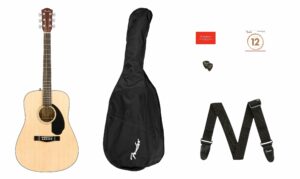 | Fender CD-60S V2 | 95 | 125+ | |||||
| Best Acoustic-Electric Guitars for Beginners | ||||||||
 | Yamaha APX600 | 94 | 1150+ | |||||
 | Guild D-240E | 93 | 200+ | |||||
| Best Classical / Nylon String Guitars for Beginners | ||||||||
 | Yamaha C40 MkII | 93 | 2100+ | |||||
 | Cordoba C5 | 92 | 475+ | |||||
The Best Acoustic Guitars for Beginners
Yamaha FS800
Cons
- Bass has less depth
- Plastic nut and saddle
Pros
- Solid spruce top with traditional X-bracing
- Great value acoustic guitar
- Balanced response, sustain, and projection
- Chords and notes ring well
Yamaha remains the brand to beat for student-friendly instruments, and the FS800 is their highest-rated, acoustic guitar for beginners.
This beginner acoustic guitar is from their popular FG/FS series, and sports a concert body. Having a smaller concert body makes the FS800 more comfortable for younger players. It also has a slightly shorter scale length, lessening string tension for more effortless playability.
The smaller profile and shorter scale affect the sound, bumping up the mids without overwhelming other frequencies. This gives it a balanced tone that lets you hear every note more clearly. This type of tone will sound better as you get more experience and learn about tone complexities.
On the flip side, it has less of the boominess and treble crispness that you get from dreadnoughts.
For the price, it comes with nice features that include a solid spruce top and traditional scalloped X-bracing support. This makes the top vibrate better, which results in good response, sustain, and projection.
Build quality is better than what you'd typically expect in this price range. The body feels solid and stays within Yamaha's expected quality standards. The guitar's nato neck doesn't feel cheap. It feels smooth and comfortable to play.
This comfortable playing feel, nice specs, and affordability makes the FS800 an excellent choice for beginners.
It's hard to go wrong with Yamaha, especially if you're going with their top-rated student-friendly acoustic guitar. When it comes to specs and value, the FS800 guitar is hard to beat.
Specifications
- String Type: Steel
- Body Shape: Concert
- Top: Solid Spruce
- Body: Nato/Okume
- Number of Frets: 20
- Scale Length: 25"
- Nut Width: 1.69"
| Website | Source | *Rating Value |
| YouTube | FNDGuitar | 95/100 |
Fender CD-60S V2
Cons
- Fender Play Trial is shorter than expected and not really that helpful for learning needs.
Pros
- Comprehensive bundle with the essential accessories for a beginner guitarist
- Has a warm tone with beautiful balance and projection.
- Well-built guitar with a solid top and playable neck
Tying Yamaha FS800 as the top best beginner acoustic guitars is the Fender CD-60S V2.
What could be more fitting for a beginner guitar player than to have some essential tools for playing? And the Fender CD-60S starter pack is designed with new players in mind, offering the essential things you need to start honing your guitar skills.
Inside each box, you'll find the CD-60S dreadnought guitar, along with a strap, an extra pack of strings, a gig bag, picks, and a 3-month subscription to Fender Play. The guitar itself features a solid spruce top, mahogany back and sides, and a comfortable nato neck with a smooth walnut fingerboard.
Thanks to its large, dreadnought body size and classic tonewoods, the CD-60S delivers a big, full-bodied sound with plenty of projection. This makes it ideal for accompanying vocals, playing solo, or just jamming unplugged.
One cool feature of this pack is its integration with Fender Play. It’s an educational platform made by Fender. It offers step-by-step video lessons, progress tracking, personalized lesson plans, and an online supportive community.
It's a great resource for learning at your own pace and reaching your guitar goals. However, the one that comes free with the package is only a trial version. So, you will need to upgrade it in order to continue using it.
Overall, the Fender CD-60S Dreadnought Pack offers a solid combination of quality, playability, and value. It’s a good deal for new guitarists. It has some of the essential tools a beginner needs and more.
Specifications
- String Type: Steel
- Body Shape: Dreadnought
- Top: Solid Spruce
- Body: Laminated Mahogany
- Number of Frets: 20
- Scale Length: 25.3"
- Nut Width: 1.69"
| Website | Source | *Rating Value |
| YouTube | Haworth Guitars | 95/100 |
Best Beginner Guitars - Acoustic-Electric Guitars
Yamaha APX600
Cons
- Bar chords and string bending can be quite challenging
- Some users reported a slightly tinny sound
Pros
- Compact and Lightweight, making it easy to handle and transport
- Convenient Built-in Tuner
- Performs well both acoustically and when connected to an amplifier
- Good quality at an affordable price point
Yamaha is known for blending quality craftsmanship with affordability. This is well showcased by the Yamaha APX600, which tops our list for the best acoustic-electric guitar.
This acoustic-electric guitar has a thinline cutaway body designed for comfortable playability. You can do chords with ease or play some leads up to its 22nd fret thanks to the cutaway on its upper bout.
Despite its slim profile, it doesn't compromise on sound quality. With a spruce top and rosewood fingerboard and bridge, it produces a rich, resonant tone suitable for various playing styles.
In terms of electronics, it’s got a piezo pickup system that is ideal either for performing live or recording. It also has an on-board tuner for added convenience.
If you’re a beginner seeking to improve your skills, Yamaha offers the Player Port app. This app provides helpful tips, tutorials, and even a built-in tuner to assist you with your playing.
So, if you're looking for an electro-acoustic guitar with a big sound, the Yamaha APX600 is worth considering. It's a reliable acoustic-electric guitar at an accessible price point.
Specifications
- String Type: Steel
- Body Shape: Thinline Cutaway
- Top: Spruce
- Body: Locally-Sourced Tonewood **
- Number of Frets: 22
- Scale Length: 25"
- Nut Width: 1.69"
| Website | Source | *Rating Value |
| YouTube | Musician Wave | 94/100 |
Guild D-240E
Cons
- Plastic bridge pins (replaceable with bone)
- Too traditional / plain, in terms of looks and tone
Pros
- Classic dreadnought tone, with deep bass and brassy highs
- Traditional aesthetics and feel, boisterous and resonant acoustic sound
- Discrete active pickups with good plugged-in tone
- Excellent value for the price
The Guild D-240E is a superb acoustic-electric guitar that blends classic dreadnought design with modern functionality.
It has a solid spruce top, mahogany back and sides, and a big dreadnought body, which lets it deliver rich bass and brassy highs. As expected from traditional dreadnoughts, it takes hard strumming like a champ and has excellent projection. Note that the back and sides feature mahogany construction, compared to the usual cheaper tonewood options used on other guitars.
Guild equipped the D-240E with the Fishman-designed AP-1 Sonicore pickup system, which produces a naturally amplified sound. You’ll have to get close to see the discrete soundhole-mounted controls, which removes the need for body modifications.
The fast, slim C-shaped mahogany neck provides a modern contrast to its overall traditional design. And this is a welcome change, especially for students who prioritize playability.
Attention to detail is evident in the overall construction of this beginner acoustic guitar, from the herringbone rosette vintage-inspired appointments to its satin finish.
If you’re looking for a no-nonsense traditional guitar that you can learn and play on stage, this is for you. This is also a fabulous yet affordable pick for budget-conscious guitarists looking for a traditional acoustic-electric dreadnought guitar.
Specifications
- String Type: Steel
- Body Shape: Dreadnought
- Top: Solid Sitka Spruce
- Body: Mahogany
- Number of Frets: 20
- Scale Length: 25.5"
- Nut Width: 1.69"
| Website | Source | *Rating Value |
| YouTube | Ben Coombs | 95/100 |
Best Guitars for Beginners - Classical / Nylon String Guitars
Yamaha C40 MkII
Cons
- No solid wood component
- Not for non-classical players
Pros
- Most popular beginner classical guitar
- Time-tested build quality and reliability
- Good clarity and balanced sound
- Student-friendly playability
Topping the best beginner guitar for the classical category, is the Yamaha C40 MkII. This beginner acoustic guitar is widely used by beginner and classical guitar students. It's mainly because it is cheap and widely available due to its quality-to-price ratio.
Nylon strings are significantly easier to fret than steel strings, making this a good beginner guitar. However, it has a wide nut width following traditional classical guitar specs. This may be too wide for those used to slim profile neck acoustics.
Nylon strings are also dramatically different, with a warmer tonality than steel string acoustics.
I got the C40 back when taking formal classical guitar lessons, which has served me well for that purpose. It has good clarity, which is important for learning different techniques, and has balanced bass and treble.
On the other hand, the C40 is not a good fit for playing modern songs, let alone rock songs. While it can technically be used to play non-classical songs, they will sound different, so carefully consider your preferred style of music before getting this beginner acoustic guitar. Switching to a nylon string guitar is an excellent way to make a familiar song sound fresh.
The Yamaha C40 is moderately impressive on paper, with no solid top or premium cosmetics. But it easily trumps others with its legacy and longevity. So many guitar players started/studied guitar on the C40. I, for one, can still play my old Yamaha C40 which is now over 2 decades old. And it still looks and plays well, albeit a bit battered because of use.
When I was taking classical guitar lessons, I used to carry it all over the city where I live, and I never had any serious issues with it.
I used to rank this as one of the best guitars for beginners - I even recommend it over popular beginner electric guitars. But times have changed. These days, kids are more interested in modern musical styles that require steel strings.
Still, the Yamaha C40 is the best acoustic guitar for beginners who want to study classical guitar on a budget friendly instrument.
If you're aiming for a traditional classical guitar tone and playability at a modest price, then this is the best beginner guitar for you.
Specifications
- String Type: Nylon String
- Body Shape: Classical - a little smaller than a Grand Orchestra
- Top: Laminated Spruce
- Body: Meranti back & sides
- Number of Frets: 18 - 12 open
- Scale Length: 29.5625"
- Nut Width: 2.0625"
| Website | Source | *Rating Value |
| YouTube | Mike Paradiso | 94/100 |
| YouTube | 5 Minute Music | 95/100 |
Cordoba C5
Cons
- Slightly modified body
Pros
- Rich and deep sound, particularly in the mid and low tones
- Solid cedar top enhances the warmth of the sound
- Quality craftsmanship despite being mass-produced
- Bone nut and saddle
- Has a truss rod adjustment
The Cordoba C5 is a handcrafted nylon-string acoustic guitar. Traditional construction techniques, such as Spanish-style fan bracing, are used to ensure a balanced sound that resonates evenly across the frequency spectrum.
In terms of materials, the Cordoba C5 doesn't compromise on quality, despite its affordability. The mahogany back and sides provide a solid foundation for the cedar top. This delivers a blend of warmth and brilliance that is characteristic of classical guitars.
The solid mahogany neck enhances sustain and clarity, while the rosewood fingerboard and bridge contribute to both the aesthetic appeal and playability of the instrument.
And speaking of aesthetics, the Cordoba C5 impresses with its attention to detail. It features a gloss polyurethane finish, Indian rosewood binding, and a stylish rosette. The combination of these elements adds to the overall elegance of the guitar.
Beyond its looks, the C5 is a comfortable classical guitar. With its solid construction, quality tonewoods, and thoughtful design, the Cordoba C5 stands as a compelling choice if you're seeking a nylon-string acoustic guitar that is reliable and will not break the bank.
Specifications
- String Type: Nylon
- Body Shape: Classical
- Top: Solid Western Red Cedar
- Body: Mahogany
- Number of Frets: 19
- Scale Length: 25.5"
- Nut Width: 2.04"
| Website | Source | *Rating Value |
| YouTube | This is Classical Guitar | 95/100 |
Things to Consider When Buying a Beginner Acoustic Guitar
- Like all musical instruments, acoustic guitars bring out the musician's distinct style. This is the reason why there is no one guitar to fit everyone perfectly. Instead, many different guitar designs cater to personal playing styles and expressions.
People will usually gravitate towards beginner guitars that are similar to what their favorite musicians use. So, the safest choice is to start on an instrument that looks and sounds familiar. But this is not a strict rule because some experts will advise beginners to learn non-familiar instruments like a nylon string guitar to expand their sonic and playing palette right at the start.
- Playability is a critical factor to consider when getting beginner acoustic guitars. Below are the main factors that make a guitar easy or hard to play.
Action
Action is the distance between the strings and the fretboard. It's adjusted in most acoustic guitars by filing down or shimming the bridge saddle. The nut is sometimes filed down as well. Other factors affecting action include neck relief and fret height. If it's too high (above the fretboard), the strings are hard to press down. If it's too low (close to the fretboard), the strings will buzz when you play them. So, guitar manufacturers aim to set it at an average factory setting.
According to Martin & Co. guitars, the 12th fret action should have a maximum of 0.90" (2.8mm) for the low E string and 0.65″ for the high E string. As long as the string height is somewhere close to the measurements above, you shouldn't have too many issues. If it's significantly higher or low enough to cause buzzing, you will either want to get a set-up or buy a different guitar.
Nut Width
As previously mentioned, a guitar's nut is what the strings pass through before the fretboard starts. It's on the end closest to the tuning pegs and has six grooves for the strings to sit in.
Nuts come in different widths. Guitars with wider nuts have the strings spaced farther apart; the opposite is true for those with thinner nuts. The two most common nut widths are 1.69" and 1.75". Younger musicians, or those of you with smaller hands, may prefer something even thinner (though they won't necessarily need it!). Note that classical guitars usually have a wider nut width of about 2". In addition to nut width, neck shape is another factor to consider.
String Type
There are two main types of acoustic guitars: steel string and nylon string.
Steel strings, which are steel-plated with a bronze alloy, are more challenging to press down. Younger children (generally under 7) often struggle to push these strings down. This is the most familiar configuration widely used in most music styles. Note that how you change the strings of steel-stringed acousticsis slightly different from that of nylon guitars.
Nylon strings are made from a material that gives them a different sound and makes them significantly more straightforward to push down than steel strings. This is the most common choice for students who want to learn classical guitar music but is in no way limited to that, especially popular artists like Jason Mraz using them. Younger players find these strings much easier to press down.
- Acoustic guitars come in various body shapes and sizes, and the general idea is that bigger-bodied guitars have more volume and bottom end, making them sound fuller. Smaller-bodied guitars lack low end, emphasizing the mid and high frequencies, which works great with fingerstyle playing and other similar styles. Big-bodied guitars like the Dreadnought can be too big for smaller players, so guitars with compact bodies will be ideal. The type of finish on the body and neck also impacts playing feel and comfort. I prefer a satin finish, but it's not very good at protecting the wood. Speaking of protection, your guitar's body style and size will also dictate the gig bag or guitar case you'll need.
Here, we've ordered the most commonly found body styles in order of biggest to smallest:
- Jumbo
- Dreadnought
- Slope-Shoulder Dreadnought
- Grand Orchestra
- 000
- Classical
- 00
- Parlor
- Most of the guitars featured here have a 1.69" nut width, which is a standard specification used by many guitar manufacturers. This width is good enough even for young players. Guitars with narrow nut widths and flat fingerboard radius are easier for those with short fingers. 3/4 size guitars and parlor guitars usually fall into this category. Classical guitars (and nylon string guitars in general) typically have wide nut widths at around 2", which may make fretting some chords harder for those with short fingers. But this does not mean that classical guitars are impossible because while it may be hard at first, the wider string spacing opens up the fretting hand better, improving stretching ability and strength. This is why I've taught many young guitarists on classical guitars, and other guitar teachers do the same.
- The simple addition of a compact piezo pickup and preamp system can turn your acoustic guitar into a stage-ready instrument. And this added function makes them the best deals to get for serious students of the instrument.
These days, many beginner acoustics come with pickups right out of the box. This is why we added a section featuring the best beginner acoustic-electric guitars so you can take your starter guitar with you on stage. Acoustic-electric guitars are highly recommended for fast learners and serious guitar students, so they won't have to buy another guitar for their performances when amplification is needed.
Big-name brands know this and have been offering student-friendly guitars like the Martin LX1E with built-in pickups.
- The first month of guitar playing is going to be the hardest. This is because when you start playing, you don't have any calluses, so playing your guitar for more than 15 or 20 minutes at a stretch will hurt the tips of your fingers. However, if you stick with it, you'll have a few good calluses built up when you've been playing for three or four months.
Your main concern should be overplaying. We know playing for long periods is tempting, especially when you first get your guitar. However, if you do this before you've built up the proper musculature, you can cause permanent damage to your body. So when you're just starting, take a 15-minute break for every 30 minutes you play. You can extend these times when you've been playing longer, though make an effort to stay within two hours in one sitting.
- Both have their merits. The electric guitar has thinner strings that make it easier on the fretting hand. It is ideal for learning bending, slides, hammer-on, and other intermediate to advanced-level techniques. On the other hand, an acoustic guitar is perfect for learning basics like strumming and plucking.
The main reason I typically recommend acoustic is its accessible price. Acoustic guitars are usually cheaper and do not require extra amp expenses. This also makes it easier to grab and play.
Sometimes, I recommend an electric guitar, like when a student has already learned the basics of a borrowed instrument or strongly prefers an electric guitar.
- Everyone learns differently, so it's hard to suggest a one-size-fits-all approach to practicing the guitar. The most important thing to remember is that learning the guitar is a process. No one is awesome at playing an instrument when they first start. Most musicians struggle for a while before they start learning. So, even though it may be difficult, keep working on it.
Also, if you're not going to invest in guitar lessons, most musicians have a good experience with Hal Leonard's books. The company also publishes books on different styles for more advanced musicians. There are also a ton of great YouTubers creating lessons. All you have to do to find them is type "Beginner Guitar Lessons" in YouTube's search bar, and you'll find what you need to get started.
- We wanted to include only a little additional information, as too much could confuse beginners and is optional for anyone just starting. However, if you'd like to read more advanced details on Tonewoods, Scale Lengths, or Acoustic-Electric Guitars, please read what to look for when buying an acoustic guitar. Another important consideration is dominant hand orientation. Look into the Left Handed vs Right Handed Guitar discussion.
Perfect Fit
Things That Make Beginner Acoustic Guitars Easy (Or Hard) To Play
Body Type
What is the Best Guitar for Short Fingers?
Buying Advice on Acoustic-Electric Guitars
What To Expect During Your First Few Weeks of Playing the Guitar
Which is better for beginners, Acoustic or Electric Guitar?
Tips on Practicing
Advanced Topics
Beginner Acoustic Guitar Selection Methodology
The first edition was published in 2017. The current edition was published on May 9, 2024
All the Gearank.com staff and this guide's author play acoustic guitar, so the primary criterion for our selection of the best beginner acoustic guitars is that they should be relatively more straightforward to play. With that in mind, we created a list of good beginner guitars. It features guitar candidates with suitable nut widths, scale lengths, body types, and string types, which we know from experience will make learning to play as painless and enjoyable as possible. A good beginner guitar can help beginners get through the first few weeks of learning and practice.
For this edition, three main sections feature regular acoustic guitars, classical guitars, and acoustic-electric guitars. We've also increased the price range to $500 to account for market price changes. This still limits the list to budget-friendly options, but if you have extra dough, you can go for beginner acoustic guitars from premium brands like the Taylor Academy 10, Martin D Jr-10, and the like.
Only those available from major online music gear retailers in the USA are included. If you'd like to know how the Gearank scores out of 100 were calculated, please read How Gearank Works.
Further Advice
If after reading this guide you still have some questions about buying your first guitar, please feel free to post questions in the comments section below and we'll help you out.
About the Author and Contributors
Here are the key people and sources involved in this guide's production - click on linked names for information about their music industry backgrounds.
Lead Author & Researcher
Alexander Briones
I have been writing about and researching music gear for many years, all while serving as a music director at my local church. I engage in guitar playing and singer-songwriter stints, in addition to mentoring young musicians and teaching guitar and bass.
My first acoustic guitar was an Ovation knock-off that had ridiculously high unplayable action. It was not until a few years later when I was given a Yamaha C40 that I actually started enjoying playing. After having gone through this frustration, I've made it my personal mission to prevent other students from suffering the same fate.
Contributors
Jerome Arcon: Product research.
Mason Hoberg: Supplemental writing.
Jason Horton: Editing and Illustrating.
Media
Main/Top Image: based on a stock photograph in the public domain.
The videos have been embedded in accordance with YouTube's Terms of Service.
Image Credit: The individual product images were sourced from their respective manufacturers' websites, promotional materials or supporting documentation.
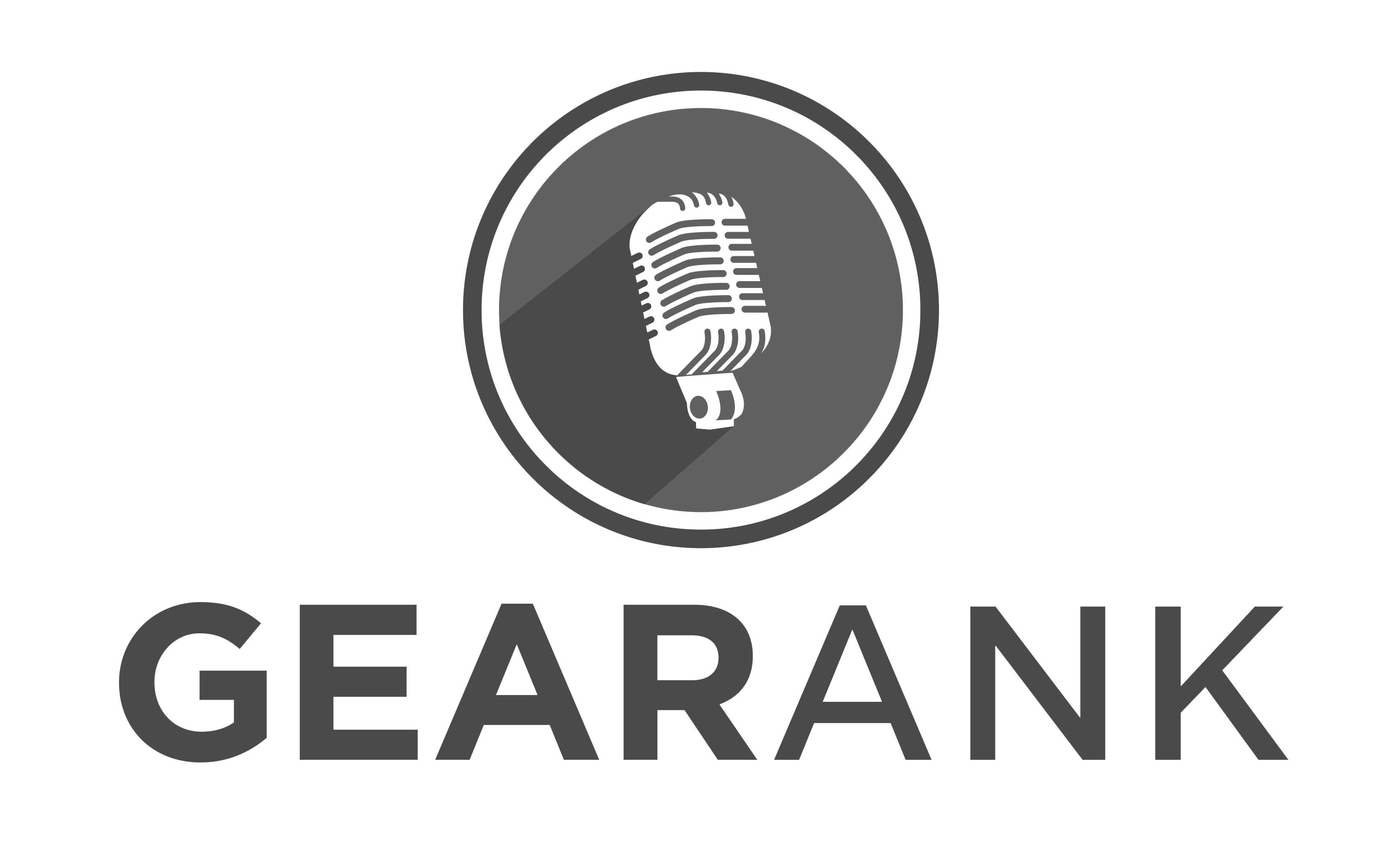
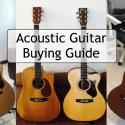
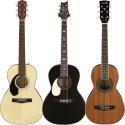
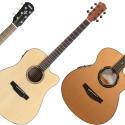

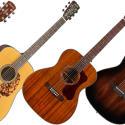
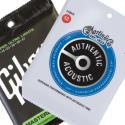
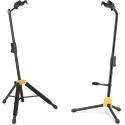
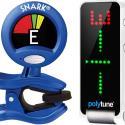
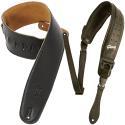
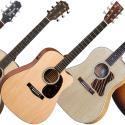
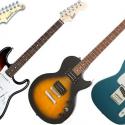
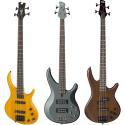
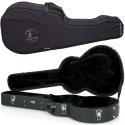
These guitars dropped off the list in this Dec 2023 Update:
Ibanez AW54
Yamaha FGX800C
Takamine GY11ME – Long Form Expert Review
Cordoba C5
We removed the following guitars from the recommended list above when we published the September 2022 Edition:
The following guitar came off our recommended list above when we published our March 2022 Edition:
Publication of our July 2021 Edition resulted in the following guitars coming off the recommended list above, but you can still see our analysis of them:
Thank you, this really helped a lot. My son wants to start playing and I had no idea where to start. I now feel Confident that I will be making the right purchase for him. Now all I need is ear plugs ???
I am learning to play guitar and the only chord I am having trouble with is C. Having short large fingers means that the G string does not ring clear. Should I look for a guitar with a larger nut or switch to Nylon. Both have been recommended to me by guitar players.
Larger nut widths, which is what nylon string guitars tend to have, are easier to play with thicker fingers, so I agree with the advice you have received.
Maybe you could go into a large guitar shop and try a few different options to see what feels best for you.
As a result of our September 2020 update the following came off our recommended list above, but you can still read our analysis of them:
I am also a senior person considering learning how to play the guitar for the first time. There is a small music store in my neighborhood that I am planning on purchasing my guitar. The store only carries two companies and Teton Guitars is the larger of the two. My question is do you recommend Teton Guitars? How do they compare to the companies/models you recommend for beginners. The model suggested by the store is STS10NT. What do you think of this model? Thanks for any recommendations you may have.
Teton is a brand that isn’t sold by any of the major online music gear stores so they don’t feature very prominently in our research.
The handful of ratings and reviews I’ve seen for the brand are good, but we have no rating data on the model you asked about.
Our recommendations are the ones you see listed above for beginner guitars.
I recently purchased an Ibanez SGT130 for my husband for his birthday. How does that compare to the Ibanez AW54 listed above?
I am a singer and want to learn guitar. I want to sing solos with my guitar do you suggest the Yamaha FS830 or FS800. i know there’s a cost difference, but i prefer to have the better sound for solo. R&B, Soul, Gospel.
The main difference between the two models you mentioned is the wood used for the back and sides, which is laminate okoume for the FS800, and laminate rosewood for the FS830.
While laminate rosewood will definitely look better, the difference in tone between these two laminate wood is not going to be enough to justify the price increase. And with the FS800 having substantially higher ratings, market response seems to agree with my opinion.
So, if forced to choose between the two, I’d go for the FS800.
In case anyone is interested, here’s a link to the ratings of both the FS800 and FS830.
The FS800 was also the Highest Rated Acoustic Guitar Under $200 as of September 2019 – You can see it here.
Is there a list of guitars by nut width size available?
Interesting question!
We haven’t created one, but we do list the nut widths of all the guitars above under Specifications in their individual descriptions.
Hi. A senior beginner here. I appreciate your advice on guitars for beginners. I am considering some steel-string acoustics from Yamaha, specifically the FS800 series(Concert body type) and The Yamaha FG800 series (Dreadnought body type). I have also come across the Epiphone Hummingbird Artist acoustic, and am interested in that as well. Just wondering if you would have any thoughts on any or all of the above. Thanks very much for your time. Matt
The Yamaha FG800‘s edge is its solid spruce top, while the Epiphone Hummingbird‘s advantage is its aesthetic appeal. Note that we don’t have data for the FS800, but being from Yamaha, I wouldn’t be surprised to find it doing just as well.
Although outside the scope of this guide, the guitars you mentioned are reasonably priced and similarly rated. So it’ll mostly boil down to your preference: either you want to go for a solid top with conventional appearance, or a premium looking guitar with laminate top.
Update: We did rate and rank the Yamaha FS800 in September last year – click here for the details.
We have removed one of the guitars from our recommendations due to a lack of availability but you can still read about it – Fender CD 60 All Mahogany. Another version called the Fender CD 60s is available.